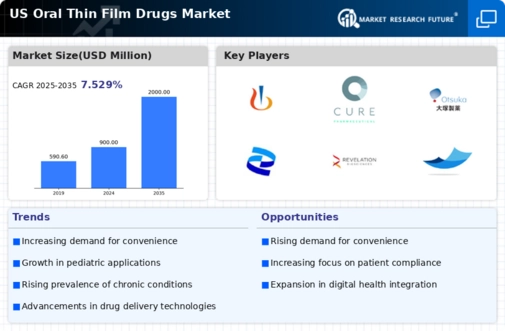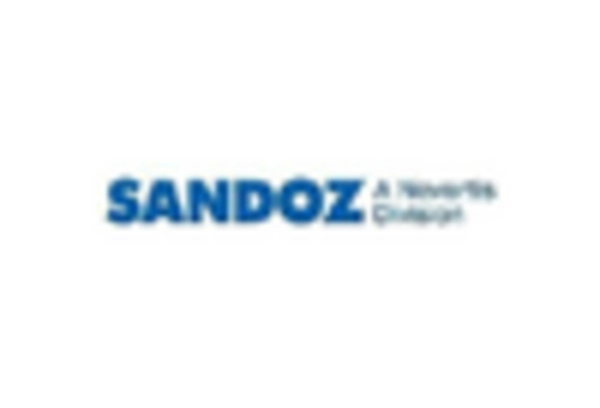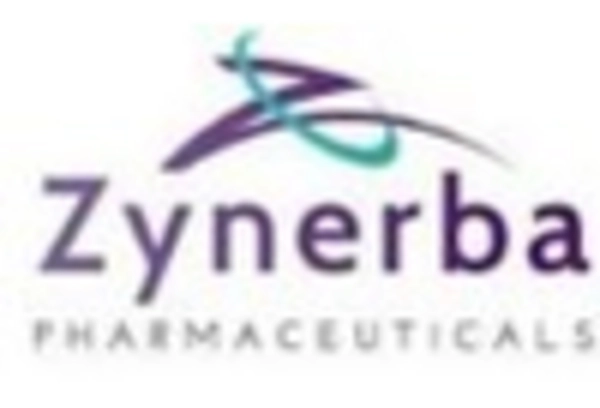Growing Interest in Personalized Medicine
The oral thin-film-drugs market is increasingly influenced by the rising interest in personalized medicine. As healthcare shifts towards tailored treatment approaches, the demand for drug delivery systems that can accommodate individual patient needs is growing. Oral thin films can be designed to deliver specific dosages and combinations of active ingredients, aligning with the principles of personalized medicine. Market analysis indicates that the personalized medicine sector is anticipated to reach a valuation of $2 trillion by 2030, with a significant portion attributed to innovative drug delivery methods. This trend suggests that the oral thin-film-drugs market may benefit from the integration of personalized approaches, potentially enhancing patient adherence and therapeutic efficacy.
Advancements in Manufacturing Technologies
The oral thin-film-drugs market is being propelled by advancements in manufacturing technologies that enhance production efficiency and product quality. Innovations such as 3D printing and continuous manufacturing processes are streamlining the production of oral thin films, allowing for greater customization and faster turnaround times. These technological improvements not only reduce costs but also enable the development of complex formulations that were previously challenging to produce. As a result, the market is likely to see an influx of new products that meet diverse patient needs. Industry reports suggest that the adoption of advanced manufacturing techniques could lead to a reduction in production costs by up to 20%, thereby fostering competitive pricing in the oral thin-film-drugs market.
Rising Demand for Non-Invasive Drug Delivery
The oral thin-film-drugs market is experiencing a notable increase in demand for non-invasive drug delivery methods. Patients are increasingly seeking alternatives to traditional methods such as injections and pills, which can be cumbersome and uncomfortable. Oral thin films offer a convenient and user-friendly option, allowing for rapid dissolution and absorption in the oral cavity. This shift in consumer preference is supported by market data indicating that the non-invasive drug delivery segment is projected to grow at a CAGR of approximately 8% over the next five years. As healthcare providers recognize the benefits of these innovative delivery systems, the oral thin-film-drugs market is likely to expand, catering to a broader audience seeking effective and less invasive treatment options.
Increased Focus on Pediatric and Geriatric Populations
The oral thin-film-drugs market is witnessing a growing emphasis on developing formulations. These formulations are tailored for pediatric and geriatric populations. These demographics often face challenges with traditional dosage forms, such as difficulty swallowing pills. Oral thin films present a viable solution, as they are easier to administer and can enhance compliance among these patient groups. Recent studies suggest that approximately 30% of children and 40% of elderly patients struggle with conventional medication forms. Consequently, pharmaceutical companies are investing in research and development to create age-appropriate formulations, which is expected to drive growth in the oral thin-film-drugs market. This focus on specialized formulations may lead to increased market penetration and improved health outcomes for these vulnerable populations.
Regulatory Changes Favoring Innovative Drug Delivery Systems
The oral thin-film-drugs market is benefiting from recent regulatory changes that favor the approval of innovative drug delivery systems. Regulatory bodies are increasingly recognizing the potential of oral thin films to improve patient outcomes and are streamlining the approval process for these products. This shift is likely to encourage pharmaceutical companies to invest in the development of new oral thin-film formulations. Data indicates that the approval timelines for novel drug delivery systems have decreased by approximately 15% in recent years, which may lead to a surge in new product launches within the oral thin-film-drugs market. As regulatory support continues to evolve, the market is expected to expand, providing patients with more options for effective treatment.

















Leave a Comment